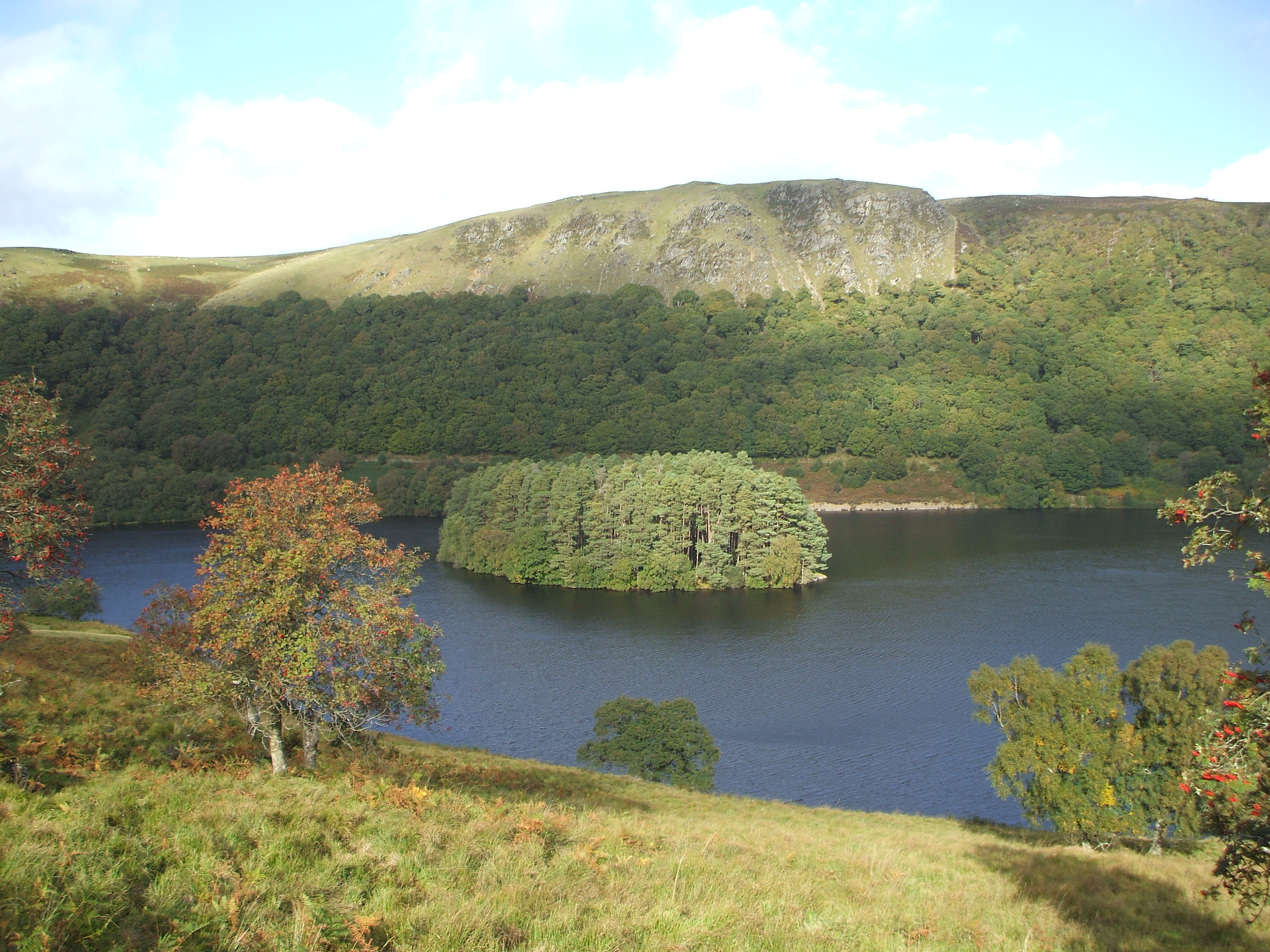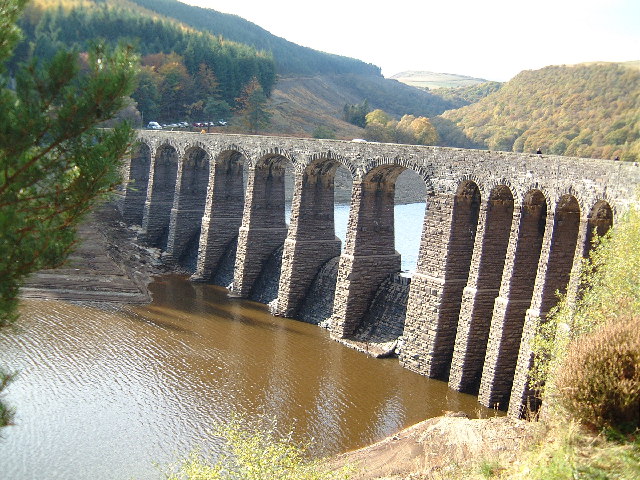
Recently Rated:
Stats
How many Reservoirs are there in the Elan Valley?
How many Reservoirs are there in the Elan Valley?
Oddly there could be several different answers!
To clear one thing up from the outset, I shall say we will include the 2 reservoirs in the Claerwen valley as being a part of the Elan Valley scheme.
In the original plans in the 19th century there were to be a total of 7 Dams, 4 in the Elan Valley and 3 in the Claerwen valley. However, of the 3 in the Claerwen valley only the foundations of the first one was built, Dolymynych. It was intended that 2 more dams would be built at a later date, but these plans were replaced in the 1940's with the much bigger scheme to build the Claerwen dam whose capacity is similar to the whole of the rest of the reservoir system put together.
Here is a description of the dams in the Elan valley scheme, from the top of the Elan river valley.
Craig Goch Dam has the rather picturesque bridge across it, and loos are available at the head of the railway track /cycle path where there are views over the Pen y Garreg reservoir. At the head of the reservoir is Pont Elan, possibly the remotest location for a traditional annual show and sheep dog trials, up stream of here is a rare example of river meanders in an upland setting, and dramatic glacial deposits at the foot of side valleys, clearly seen along side the road to Cwmystwyth.
Craig Goch Dam.
Pen y Garreg reservoir has an island that would not look out of place on a Scottish Loch and the Dam has a central tower which can be visited by walking along inside the Dam, on Dam open days when donations are collected for 'water aid'. Nearby are the Penbont house tea rooms and B+B. Below the dam are a selection of woodland walks.
Autumn in the Elan Valley - Pen y Garreg reservoir with its Island.
Garreg Ddu dam is hidden under water, below the road bridge between the Foel tower and the Nantgwyllt church. Its purpose is to maintain a minimum water level at the Foel tower, the outflow of the scheme to carry water to Birmingham. In exceptionally dry weather the level in Caban Coch Reservoir can fall low enough to expose Garreg Ddu dam, and it is only then that these 2 reservoirs appear to be separate bodies of water, normally they could be seen as being 1 reservoir.
Garreg ddu dam at a time of exceptionally low water. The water in the foreground is Carreg Goch reservoir. (picture from Wikipedia).
Caban Coch Dam is the first dam that most people would see approaching from Rhayader and the visitor centre, it is the largest of the original dams and there is a huge quarry beside it where stone was taken for in - fill for the construction of the Dams, the local stone was too hard for masons to work so stone was brought in from quarries in south Wales for the facing stones, every one of which is carefully dressed.
In the Claerwen Valley, the Dolymynach dam was begun in the 1890's so that water from the Clearwen river could be directed along a tunnel to just 'up stream' of the Garreg Ddu dam in the Elan Valley, to supply the Foel tower outflow. It was never intended to be completed at the time of the original scheme, but literally laid the foundations for expansion as and when it should be needed. As plans later changed, this means Dolymynych is the one body of water in the valley which always maintains the same level, benefiting wildlife with wetland areas at its fringes,and saving several farms from flooding.
In the 1940's it was decided that a single much larger dam could be built higher up the valley, instead of the 3 that were planned 50 years before. The Clearwen dam was built in a similar style to the older dams and has a bridge over the top. The reservoir floods an upland valley that would have been largely similar in appearance to the upper part of the Elan valley.
The View from Claerwen Dam.
There is another dam which has an unusual place in history, in fact just the remains of Nant Y Grow Dam now exist, there is now no reservoir as such. Originally built for a water supply for Elan village and the work shops during construction, it was blown up in the second world war as a part of the preparations for the Dambusters raids.
So there are 6 Dams, including Garreg Ddu - the one which is almost always submerged by the combined waters of Caban coch and Garreg Ddu reservoirs and including Dolymynych which is really only the foundations of an unfinished dam, but not including the remains of Nant y Grow Dam.
Since 1997 each Dam has been producing hydro electricity from turbines built at the base of the dams.
The question was "how many reservoirs?" and you may have noticed I have answered with the number of dams. The number of reservoirs could be said to depend upon the level of Caban coch / Garreg Ddu, but we'll count it as 2. So there are 6 Reservoirs; Craig Goch, Pen Y Garreg, Garreg Ddu, Caban Coch, with Doly y Mynych and Claerwen in the Claerwen valley.
In the 1970's, plans were made to massively increase the size of Craig Goch. This would have been such a massive dam it would have again roughly doubled the size of the whole scheme, dwarfing Claerwen and requiring a second dam to capture waters flowing into the upper Ystwyth to the North west. The plans were abandoned as projections for water requirements reduced and with increasing awareness of environmental issues.
For more information visit http://www.elanvalley.org.uk/dams-reservoirs/
If you are thinking of visiting Wales, contact www.cambriansafaris.co.uk and www.facebook.com/cambriansafaris




Diolch for posting Richard....great article, great pics too. Must visit the Elan when I get back to Wales ( next year hopefully )
I meant to add a paragraph about the aqueduct which carries the water to Frankley Reservoir on the edge of Birmingham, running by gravity alone it drops52 metres (171ft) along its 73 miles length. For much of its length it is a 'cut and cover' ditch, lined with closely fitted slabs of stone, on average it collects the same amount of water as it looses!